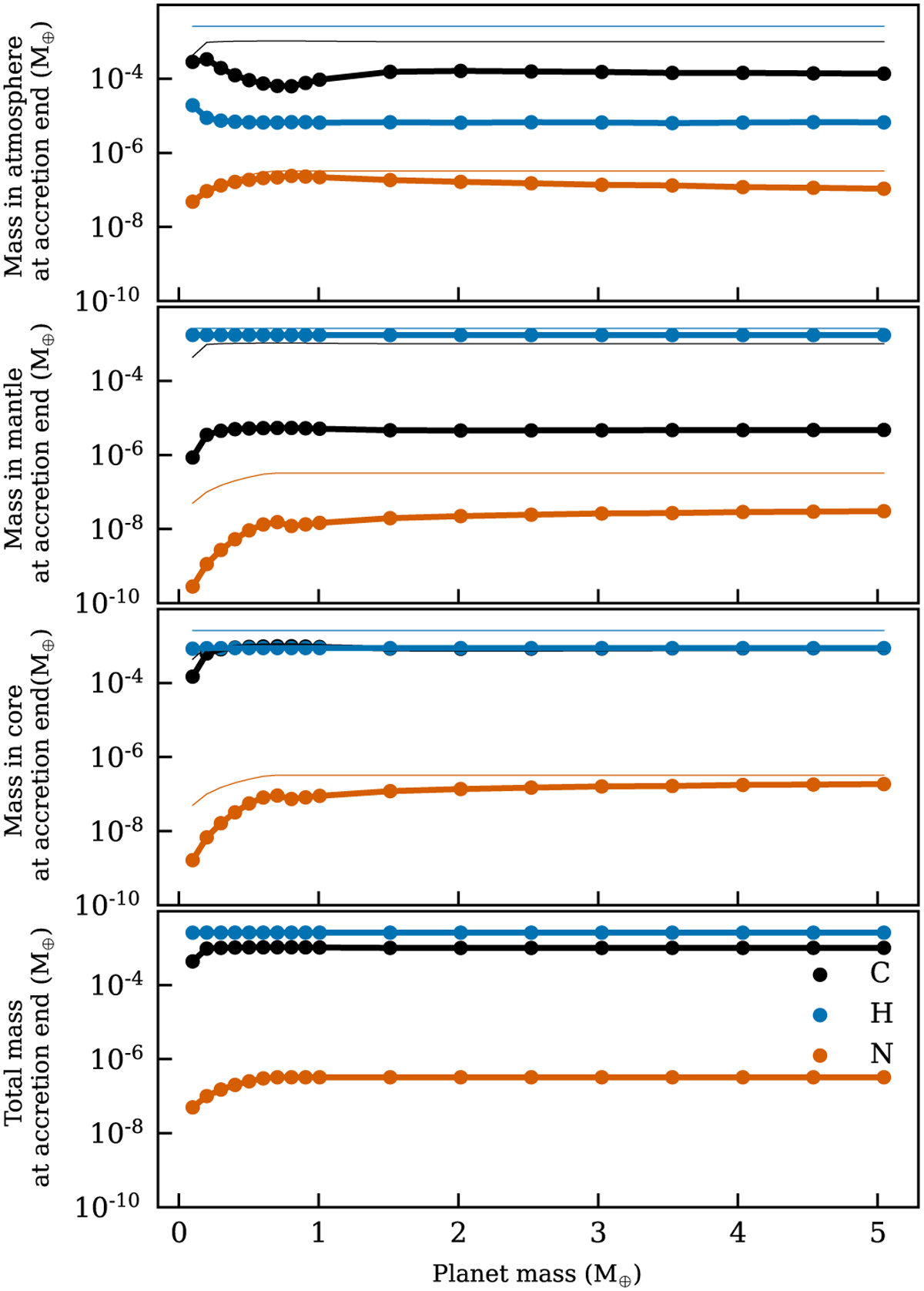Fig. 6

Download original image
Masses of hydrogen, carbon, and nitrogen at the end of accretion (but before magma ocean crystallisation) in the atmospheres (top), mantles, and cores (middle), and total (bottom) of planets at 1 AU, as a function of the planetary mass, as set by pebble accretion. Thin lines in the top three panels indicate the total budget for reference. The greatest variation with planet mass occurs in the low mass planets, while that variation is still low. Planets of greater than 1 Earth mass had the same initial volatile masses since these were bounded by the high temperatures of the envelope limiting volatile accretion, as described in Section 2.1. Therefore any differences in atmospheric composition by planet mass must be the result of processes taking place after accretion ends, as volatile accretion is relatively similar for all planet masses, which is a consequence of our envelope processing approach to volatile accretion (Johansen et al. 2023c).
Current usage metrics show cumulative count of Article Views (full-text article views including HTML views, PDF and ePub downloads, according to the available data) and Abstracts Views on Vision4Press platform.
Data correspond to usage on the plateform after 2015. The current usage metrics is available 48-96 hours after online publication and is updated daily on week days.
Initial download of the metrics may take a while.


